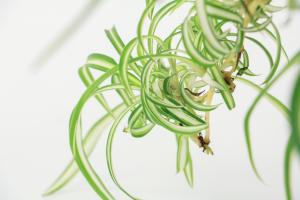Introduction
In Florida, mangrove trees are an essential part of the coastal ecosystem, providing habitat for many species and protecting the shoreline from storms and erosion. However, due to human activities such as development and pollution, many mangrove forests have been lost. Planting mangrove trees is one way to help restore and preserve these important habitats. In this article, we will go over the steps involved in planting mangrove trees in Florida.
Step 1: Choose the Right Location
The first step in planting mangrove trees is to select an appropriate location. The site should be in close proximity to an existing mangrove forest and should have suitable soil conditions. The water should be saline, with a salinity level of at least 25 parts per thousand. The site should also be sheltered from strong wave action, as this could damage the young trees.
Step 2: Obtain Permits
Before planting mangroves in Florida, you must obtain the necessary permits from the state and local government. This process may take several weeks or months, depending on the location and complexity of the project. Be sure to check with the relevant authorities before beginning any planting activities.
Step 3: Choose the Right Species
Florida has three species of mangroves: red mangrove, black mangrove, and white mangrove. Each species has different characteristics and requirements, so it's important to choose the right one for the site. Red mangroves are best suited for the shorelines and have prop roots that provide support in muddy or sandy areas. Black mangroves have pneumatophores that allow them to survive in areas with low oxygen levels. White mangroves are typically found further inland and can tolerate slightly less saline water.
Step 4: Plant the Trees
Once you have selected the right location, obtained the necessary permits, and chosen the appropriate species, it's time to plant the trees. First, prepare the planting site by removing any debris or invasive plants. Dig a small hole and insert the mangrove seedling, making sure to keep the top of the root ball level with the surrounding soil. Water the seedling thoroughly and add mulch around the base of the tree to retain moisture.
Step 5: Monitor and Maintain
After planting, it's important to monitor the trees regularly and provide ongoing maintenance. Check the soil moisture levels and water the trees as needed to ensure that they stay hydrated. Remove any dead or damaged branches, and prune the trees to encourage healthy growth. Inspect the trees for pests or diseases and take appropriate action if necessary.
Conclusion
Planting mangrove trees in Florida is an important step towards preserving the coastal ecosystem and protecting the shoreline from storms and erosion. By following these steps, you can help ensure the success of your planting project and contribute to the health of our natural environment.

 how many times do yo...
how many times do yo... how many planted tre...
how many planted tre... how many pine trees ...
how many pine trees ... how many pecan trees...
how many pecan trees... how many plants comp...
how many plants comp... how many plants can ...
how many plants can ... how many plants and ...
how many plants and ... how many pepper plan...
how many pepper plan...






























